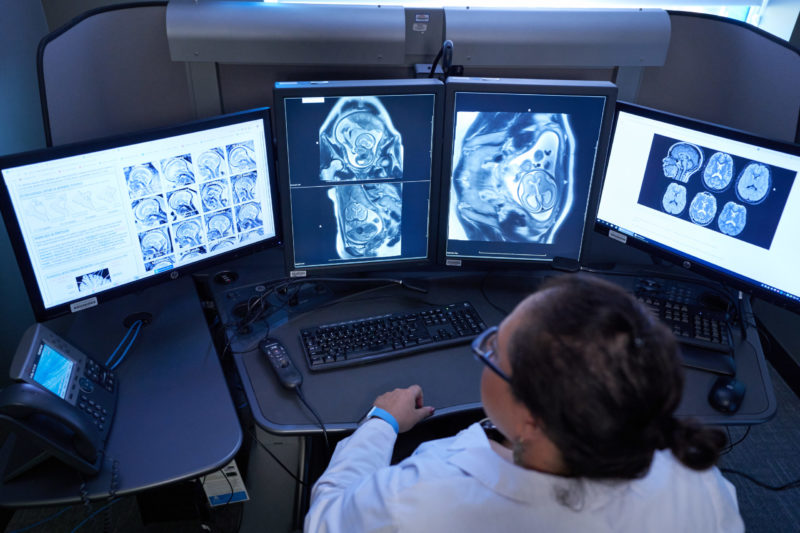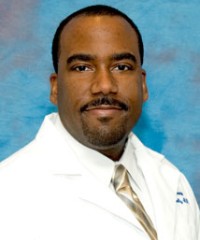Nolan Chang, MD and Stephen Parodi, MD, on how innovations will shift both where and how health care is delivered.

A collaborative approach to radiology readings
Key takeaways:
- A teleradiology collaboration between 2 Permanente Medical Groups is driving integration and faster results.
- The joint effort eliminates the need for third-party vendors, keeping radiology assessments within the PMGs.
- The partnership is the first of its kind to leverage teleradiology for regular communication across geographies.
By Michael J. Green
The Permanente Federation
For radiologists at Kaiser Permanente, time is always of the essence. Whether it’s an X-ray or ultrasound, rapid results and expedient analysis are essential to providing patients with high-quality care. The Permanente Medical Groups recently took a significant step forward in this area with a joint initiative between radiology departments in the Mid-Atlantic Permanente Medical Group and The Southeast Permanente Medical Group.
In October, MAPMG and TSPMG began cross-regional collaboration using teleradiology — the practice of radiologists remotely interpreting medical images — to evaluate patient examinations. The new collaboration, which was a year in the making, enables MAPMG and TSPMG radiologists to assist one another in real time by assessing imaging results and conducting analyses around the clock.

Radiology interpretations often take place during the evening, weekend, or overnight hours. With a larger pool of medical professionals across medical groups available to cover these typical off-hour shifts, MAPMG and TSPMG radiologists can put greater emphasis on spending time with patients and maintaining day-to-day operations.
“The purpose is to leverage the power of numbers to optimize coverage of these off-hour shifts, so that radiologists in the group being covered can focus on the daytime and procedural work, which makes up the majority of outpatient volumes for most practices,” says Ainsley MacLean, MD, neuroradiologist and regional medical director for MAPMG.
A bigger network for better results
A relatively small medical group, TSPMG has about 18 radiologists on staff. Prior to the teleradiology collaboration with MAPMG, the group relied on a third-party vendor to perform imaging interpretations during off hours. The process of outsourcing readings occasionally led to longer turnaround times for patients awaiting results.
Partnering with MAPMG and its network of 80 radiologists ensures that all diagnostic imaging examinations at TSPMG are read by Permanente physicians, and it eliminates the need for a third-party vendor. In addition to improving turnaround times, keeping assessments within the Permanente Medical Groups can improve accountability, quality, and care coordination.

“We’ve had nothing but goodwill from the other sides in terms of the radiologists and other doctors across the Permanente Medical Groups,” says Craig Logan, MD, chief of Radiology for TSPMG. “It’s been seen as a boon really because radiology relies heavily on collaboration.”
Dr. Logan, who helped spearhead the initiative for TSPMG, explains that the joint effort with MAPMG has the potential to make diagnostic reports more comprehensive with additional specialists available to share input. Furthermore, the relationship has the potential to become reciprocal; MAPMG and TSPMG could eventually exchange knowledge for consultations and review images together in real time.
“We have always had the long-term vision of using the power of the size and number of Kaiser Permanente radiology groups to assist one another during off-hours, as well as during periods of high volumes, or for subspecialty expertise,” says Dr. MacLean. “This is the first time that vision has been put into practice on a large scale.”
Related article: A better way to assess ovarian cancer risk
Collaboration key to future framework
The MAPMG-TSPMG collaboration establishes a framework for future joint efforts between all 8 Permanente Medical Groups, which will help radiologists gain a better understanding of what is required to optimize cross-regional readings.
It’s been seen as a boon really because radiology relies heavily on collaboration.
— Craig Logan, MD, chief of Radiology, The Southeast Permanente Medical Group
While all radiology departments across the medical groups currently use Kaiser Permanente’s integrated system to collaborate and treat patients within their region, the MAPMG-TSPMG partnership is the first to leverage teleradiology for regular communication across service areas. The development sets the stage to eventually expand the collaboration among all Permanente radiologists.
“If we were to magnify this collaboration across all of Permanente, hundreds of radiologists in multiple subspecialties could all communicate with each other,” Dr. Logan says.
In addition to strengthening communication and shared expertise, the increased interaction between radiology groups could allow individual Permanente physicians to diversify their practices, gain broader experience, and obtain greater national recognition for their expertise.
“This is undoubtedly just the beginning of future teleradiology collaborations between many of our regions,” Dr. MacLean says. “We’re currently investigating one unified system in which our radiologists look at images, and once that’s in place then the sky is really the limit.”
Sign-up today for our bi-monthly newsletter and receive alerts of new Permanente Medicine content.
Expanded teleradiology collaboration
By combining resources, the Permanente Medical Groups have the potential to be one of the largest teleradiology groups nationally in terms of number of radiologists and patients receiving care, Dr. McLean says; and as the network grows, radiologists may work in shifts across locations so that different specialists can review specific exams and patients receive the most timely, informed readings in every region 24 hours a day, 7 days per week.
As a case in point, toward the end of 2021 Hawaii Permanente Medical Group’s 18 radiologists turned to MAPMG for assistance after hearing about their successful collaboration with TSPMG. When HPMG learned on short notice that the third-party radiologist group they used to interpret overnight studies was no longer available, they quickly implemented a technical solution for MAPMG radiologists to provide coverage.
In addition to leveraging the protocols established from the MAPMG-TSPMG collaboration, the HPMG-MAPMG partnership also accounts for time differences — the Mid-Atlantic region and Hawaii are 7 hours apart — so that a portion of the nighttime in Hawaii is now covered during daytime hours by MAPMG radiologists. As with their TSPMG collaboration, MAPMG radiologists also provide HPMG with finalized, rather than preliminary, interpretations. The new process drives faster results for patients and more expeditious care and treatment for emergency providers.
“Kaiser Permanente as an enterprise benefits when we have these interregional collaborations,” Dr. Logan says. “I think this is in some ways a turning point to help us achieve a more unified practice.”


